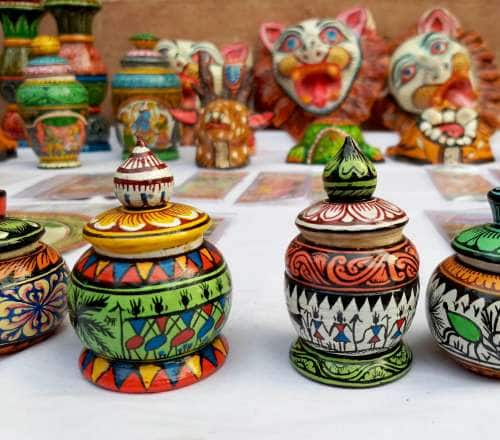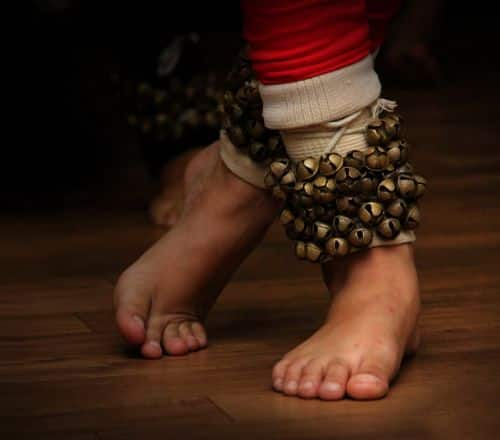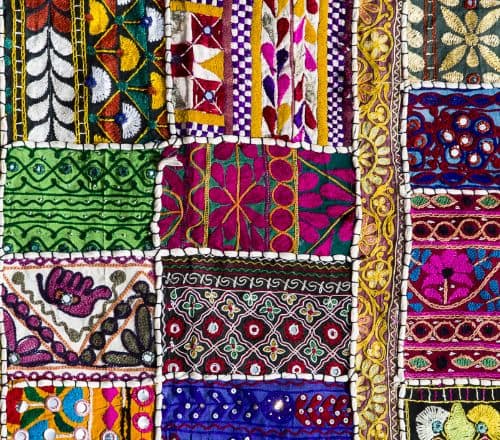Stay logged in to proceed with bookings, orders and offers.
On changing the terminal, you will loose items in your cart. Are you sure you want to change your terminal?
Unfolding the layers of the checkered textile masterpiece that put Bharuch on the heritage map of woven art.
During my school days in Bharuch, I was always intrigued by the sight of my father gifting Sujni blankets to friends. Sometimes, our relatives from abroad would ask him to send a Sujni through courier. I often wondered what made these brown, beige, maroon and green checkered quilts so special. Didn't they have access to blankets in foreign countries? As I grew older, I realised the true value of these blankets—the immense warmth they provided. It also dawned on me that the proliferation of the blankets supported many artisans. These skilled craftsmen have dedicated their lives to preserving this diminishing craft, interweaving the threads of tradition, skill, and cultural identity. Gradually, I developed a deep appreciation for Sujni blankets. I visited an age-old Sujni store, located near my house, to learn all about its history. As I stepped inside, my eyes were drawn to the stacks of varicoloured square-patterned quilts that were neatly arranged in one corner of the shop. On the opposite wall, there were framed newspaper cuttings and magazine articles. Among these, one article caught my attention—a mention of the craft's origins within the confines of Cellular Jail in the Anadamans. Intrigued, I asked the old shopkeeper, whose grandfather had established the store, about the history of the woven art form.
The history of Sujni encompasses two prominent anecdotal accounts. According to one narrative, the inception of this craft in 1860 is ascribed to a skilled weaver named Nabubhai. Another account claims that a man from Bharuch was convicted and sent to prison on the Andaman Island. There, he befriended a fellow Assamese prisoner who taught him this unique weaving art form. After he was released, he returned to Bharuch and demonstrated the intricacies of Sujni weaving to the native villagers. The craft was then passed down through generations, expanding its reach within the community.
Weaving has always held a unique place in various regions of India, showcasing diverse crafts and techniques. So, what makes Sujni so special? And why are these blankets always checkered and use only two colours? To find answers to these questions, I approached the proprietor of the shop, fittingly addressed as Sujniwala, signifying "the one who weaves Sujni." The unique surname stems from the five-generation legacy entrenched in the craft of Sujni weaving. He explained the meticulous process required to produce these cosy quilts. Sujni blankets are double-clothed, padded, and intricately woven, eliminating the need for stitching. The journey of a Sujni blanket begins with the construction of a weaving stool, which takes more than a month to finish. Once it is ready, the artisans can intertwine up to 100 quilts from a single loom. It takes the collaborative efforts of two to three craftsmen, working with a conventional handloom, to create a single Sujni in around one to two days. The artisans sit next to each other in front of the loom and repetitively pass the coloured yarns, making a horizontal series of open-end pockets. These pockets are then filled with cotton, either by hand or using tweezers. The subsequent movement of the yarns, across the loom's width, seals the pockets and initiates the formation of new ones. With the completion of each row of filled pockets, the dyed yarns are interchanged, yielding a charming checkered pattern.
As I indulged my curiosity, my mother and sister were busy browsing quilts. I was astonished by the array of shades available, including lavender, whimsy yellow, and light azure. They stood out from the typical earthy and bright tones. I quizzed the shop owner about how the colour revolution came about for Sujni blankets. He explained that over the years, as preferences evolved, they embraced the changes to cater to more customers. Besides changing colour combinations, they began experimenting with triple-coloured quilts, adding vibrance to their creations. I nodded in agreement because I, too, prefer blossoming shades over garish ones. As I caressed the soft, plush quilts displayed before me, I selected an aqua blanket with an ombre gradient for myself. The shop owner added that Sujni isn't particularly limited to being a blanket. Its cotton-clouded warmth can also be extended to a bed spread, carpet, or even a throw.
Before I bid farewell to the shop owner, I asked him a difficult question—did the entirety of his family persist in carrying forward the weaving tradition? It shocked me when he stated the harsh fact that only three families, across India, possess the mastery of Sujni weaving skills. In the face of changing times and a younger generation that is invested in modern pursuits, the survival of this skill remains uncertain. However, there are passionate supporters and foundation volunteers who are constantly working towards preserving this unique skill. Despite its steep decline, Sujni is still held aloft by a thread. It remains in dire need of an embrace from the community of art enthusiasts.





The Adani One expressly disclaims all liability, direct and indirect, in respect to actions taken or not taken based on any or all the contents of this Blog. The Blog is an opinion of the contributor based on the collation of data from various sources and is provided only for information purpose. Adani One does not canvass, advertise, solicit, invite or induct for any product, merchandise, information, brand or any other materials mentioned in the Blog, nor does it obtain any monetary benefit from the same. Reader is advised to read and apply his/her intellect and discretion in this regard. Any Intellectual Property mentioned in this blog belongs to the rightful owner. We do not intent to claim any interest over the same.